Musical future: futuristic instruments that you can buy now

The first musical instruments appeared at the dawn of human civilization. The oldest of the discovered musical artifacts, the diatonic flute from Divye Babe, is between 43,400 and 67,000 years old.
The Neanderthal pipe, carved from the bones of a cave bear, had a future, as evidenced by modern flutes of all types and stripes. It’s pretty hard to predict success or oblivion to modern developments. It is easier and more logical to look at those new musical instruments that can already be bought (or at least ordered).
Alpha sphere

')
What:
The Alpha Sphere MIDI controller was invented in 2010 by Adam Place. The tool is a spherical object of 48 sensitive membranes of various sizes. Remotely, the sphere resembles a round drum, and plays on it with separate punches or taps. The construction shines from the inside, due to which the musician playing on the “sphere” seems to be a time traveler, who has flown in to give an electronic music concert.
How does it sound:
The sphere is fully configurable, each membrane is given a note, effect, or sample, which the pressing duration, its speed and power give a different sound. The fingers of the player receive tactile feedback from the sphere - a person thus creates a sound. For experienced musicians, the unusual arrangement of control elements makes it possible to come up with their own “sound language”. For example, a major row can be assigned to a specific row of keys or built arbitrarily over the surface.
The original keys, which are now used in synthesizers, initially served as an interface for specific physical mechanisms. In turn, Alpha Sphere was invented for electronic music, which distinguishes it in a positive way.
Summary:
AlphaSphere successfully competes with other products on the market and has been sold since 2012 - a whole era by today's standards. The sphere has its own adherents among the "real" musicians - including the composer Talvin Singh and the British rock band Enter Shikari. This is not a guitar, but no longer any kind of curiosity with Kickstarter.
Seabord
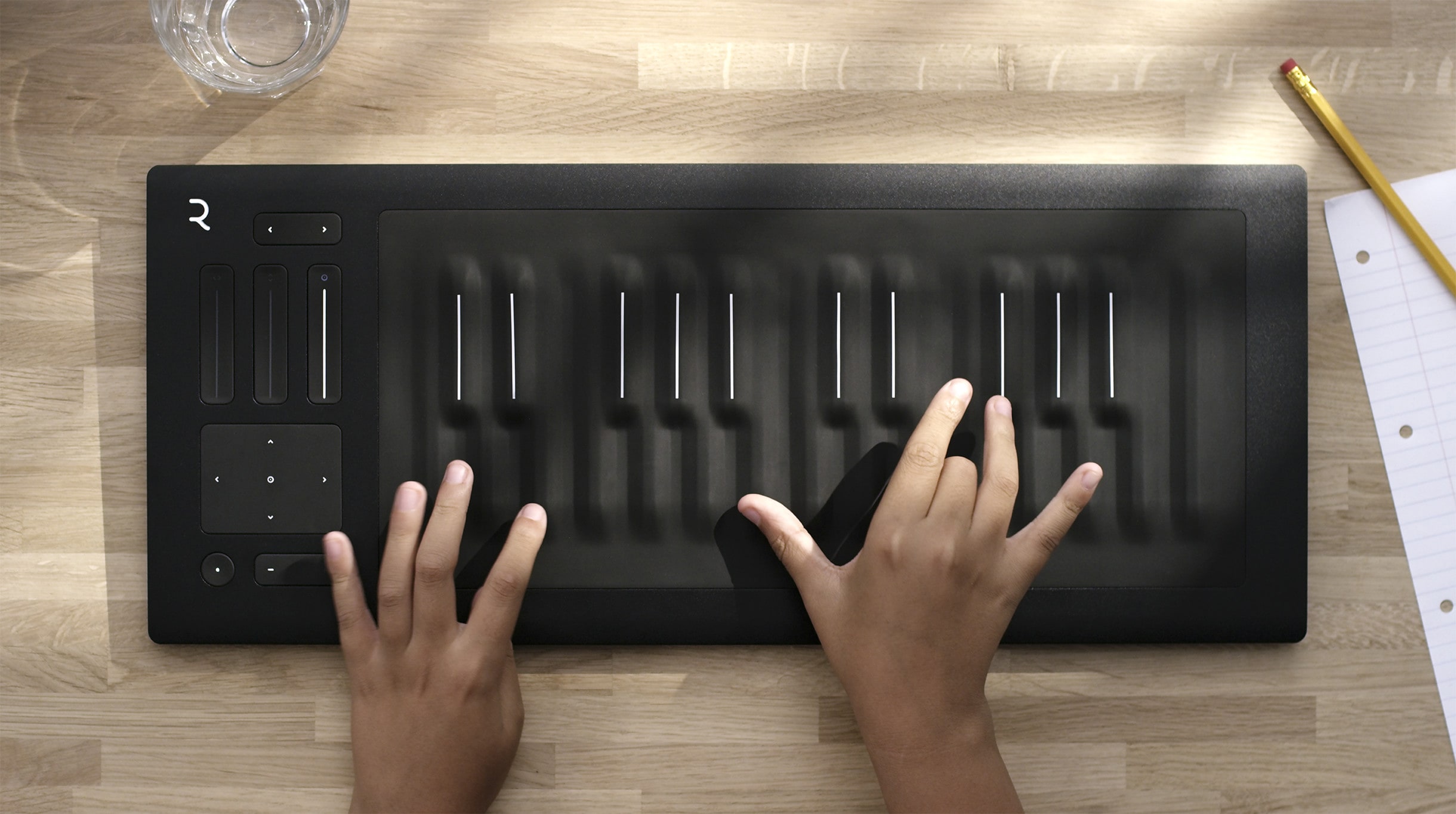
What:
The development of the London-based company Roli, Seaboard ("Seacoast") is a completely alien version of the standard music keyboard. Externally, it looks like a regular synthesizer, but only partly, since the usual keys are replaced by a wave of dark gray silicone. Black keys are marked with white stripes, and to the touch the design is silky and soft, like human flesh.
How does it sound:
There are two versions of Seaboard: Grand and Rise. The basic principle of their operation is the same: there are a lot of sensors under the silicone that take off five different touch parameters: the force of impact and pressing, lifting a finger from a key, moving up and down and right and left. Since the keys are not separate, the expressiveness of the musician increases by several times, it turns out absolutely incredible effects of vibrato and glissando. To musicians accustomed to the severity of the keys of a “real” instrument, Seaboard often seems like a strange and uncomfortable thing. Beginners like to tweak and pull the instrument, which obediently produces incredible sounds in response to such “torment”.
Summary:
The original version of Seaboard Grand, which appeared in 2013, has already managed to become the third star of Oscar-winning drama La La Land, after Emma Stone and Ryan Gosling. However, for most musicians the price of the instrument remains overwhelming, which is why Roli released a more budget version of the instrument with 25 keys - Rise. Considering that the famous composer Hans Zimmer (the one whose epic compositions you played in Call of Duty) became one of the popularizers of Seaboard, the future of the instrument seems to be quite bright for the time being.
Lumen
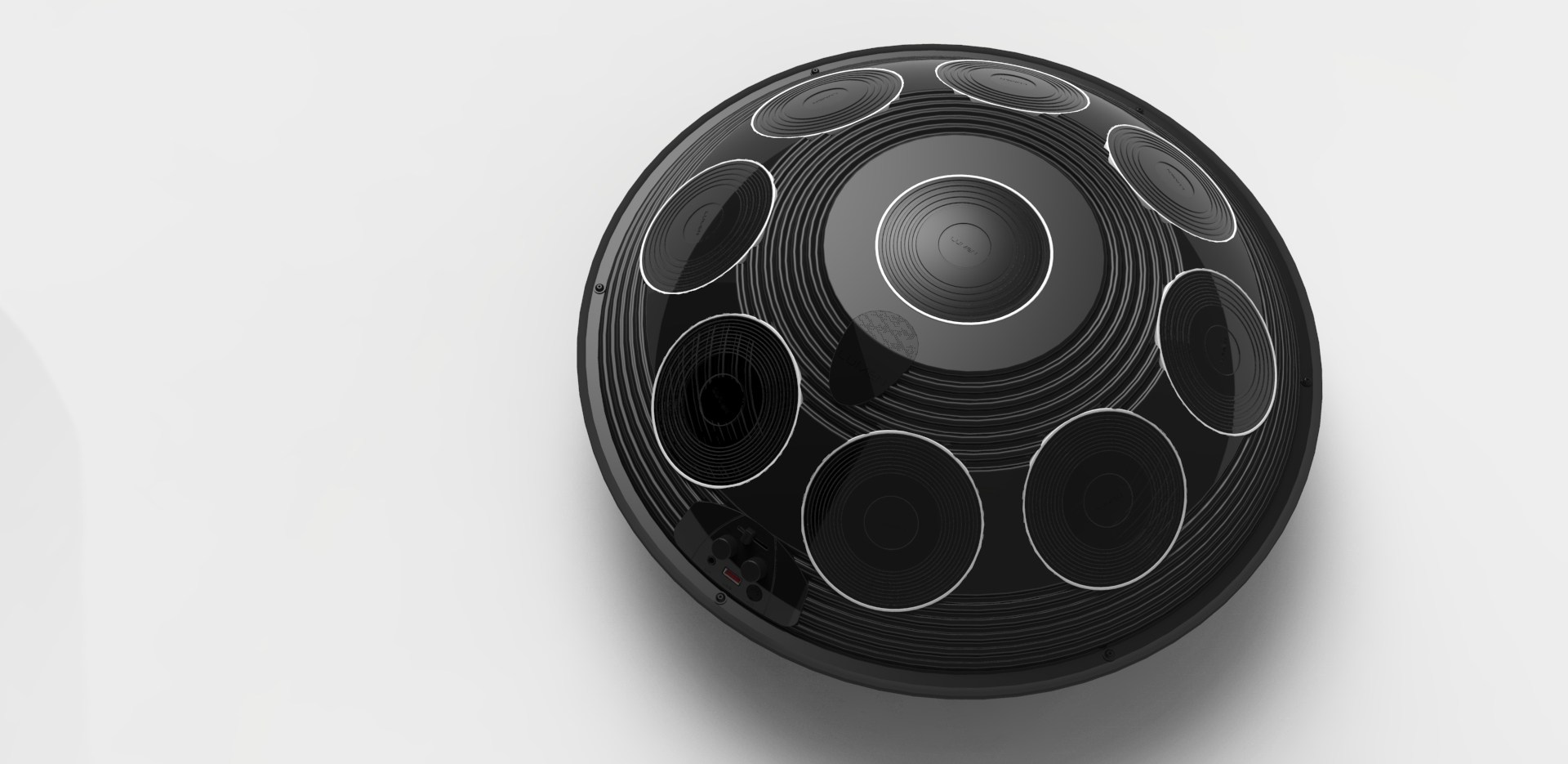
What:
Electrohang Lumen was born thanks to a successful campaign on Indiegogo, which collected $ 171,650 in 2016. The original Hang itself is a new percussion instrument of the idiophon class, which was developed in 2000 by Felik Roner and Sabrina Sharer. However, such a tool is not produced in large quantities, which is why it is difficult to purchase, therefore the inventor Guy Jackson decided to create his own version - improved and augmented.
How does it sound:
Similar to a flying saucer, the electrohang, like the original instrument, consists of two halves. At the top are eight sensitive areas that form the "tonal circle". This circle serves for sound extraction and reacts differently to each beat, depending on its strength, in order to simulate an acoustic instrument. The sounds of each individual zone are customized to the user's taste. Inside the speaker is built-in, which is very convenient - the instrument does not need to be connected to anything, it plays by itself. In addition, there is a headphone output, and for transmitting a MIDI signal in cases where the electrohang operates as a MIDI controller.
Summary:
Lumen befell the same fate as the Hang - not to get it. Deliveries of the tool will not start exactly in the near future, since production should start only now. On the other hand, in 2015, another electrokhang, Oval, was launched on Kickstarter. This project is much better able to cope with the actual production of tools, putting 500 electric hoangs. So, perhaps, the magic of crowdfunding still contributes to the popularization of ideas.
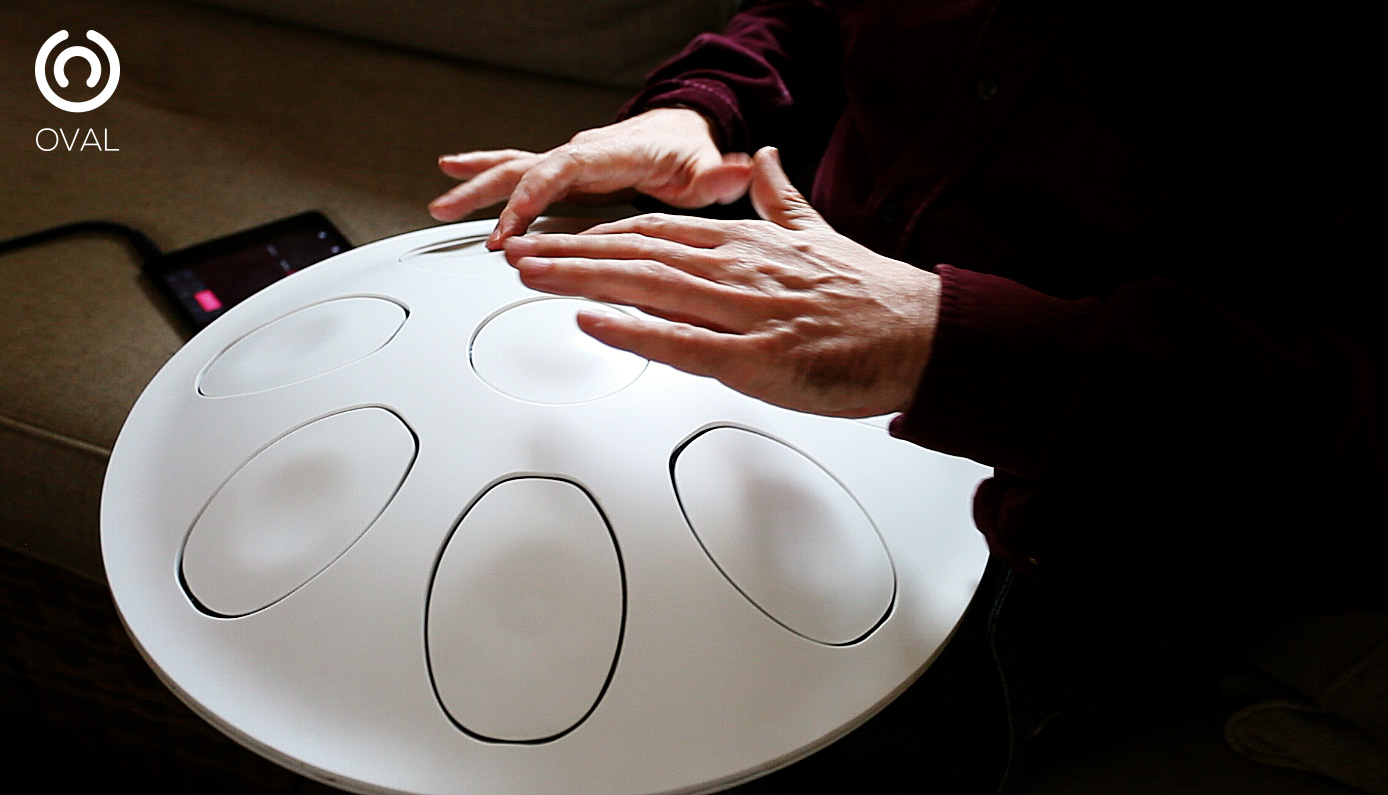
Oval
Jamstik +

What:
MIDI guitars were invented in the twentieth century, during the heyday of disco. However, the musicians still did not want to part with traditional instruments and preferred sensors like Rolank GK. Jamstik is another attempt to entice the playing public to the “dark side”. Far from the only and not the most original tool of this kind, Jamstik is trying to bribe the user in a compact size and the ability to work with the iPad, MacBooks and iPhones - and wirelessly connect to them.
How does it sound:
Jamstik has real steel strings fixed on a short case with five frets. At the bridge, they are fixed with a sound pickup, and they themselves almost never sound, so that you can strum on the instrument in crowded places, listening to it through headphones. To work, the gadget must be connected to a PC or mobile device, and the specific sound will depend on the software and technical "advancement" of the musician. Beginners are invited to the tutorial JamTutor, reminiscent of the popular game Guitar Hero.
Summary:
The latest version of the guitar, Jamstik +, easily raised $ 800,000 from Kickstarter. Musicians who bought different versions of the controller indicated that the connection was unstable (more so with the first version of Jamstik connecting via Wi-Fi). And the controller's dimensions are unsuccessful: it is easy for a beginner to play the instrument, but it is inconvenient to hold it. What really prevents Jamstik from taking over the world is the solid $ 300 price tag. The same worth a full electric guitar of good quality. With great confidence we can say that until the Chinese copy the device, it is destined to remain a niche product for Apple fans.
Fretx

What:
As it is easy to guess from the history of Jamstik, guitarists are madly in love with their warm, tube, wooden guitars. Therefore, speaking of the future of the instruments, it is impossible not to mention the smart accessory for guitars - the LED overlay on the fretboard. On Kickstarter such a thing first appeared in 2012, called Tabber, was inappropriately huge and did not collect anything. Then, in 2016, the FretX gadget was successfully launched on Indiegogo. His thin strips stick to the frets under the strings and do not interfere with playing, but, on the contrary, help: the necessary notes are illuminated with tiny LEDs. The backlight is controlled via Bluetooth from a smartphone.
How does it sound:
FretX does not sound. But the gadget helps beginners learn the basics of the game faster, so that at some point the LED-equipped guitar starts to sound good. The only limitation: the backlight is designed for only four frets. Enough just to learn a few chords and start with the feeling of singing songs "Cinema".
Summary:
Literally six months after the launch of FretX, first on Kickstarter, and then on Indiegogo, a direct competitor of the system was launched - the LED overlay Fret Zeppelin *, which covers the entire fretboard. With such a thing, the guitar turns into a semblance of a New Year tree, but it can be used not only for learning simple chords. In sum, both the gadget attracted half a million dollars, so there is definitely interest in such a device.
* Currently the name is changed to Fret Zealot for obvious reasons.
Freedrum
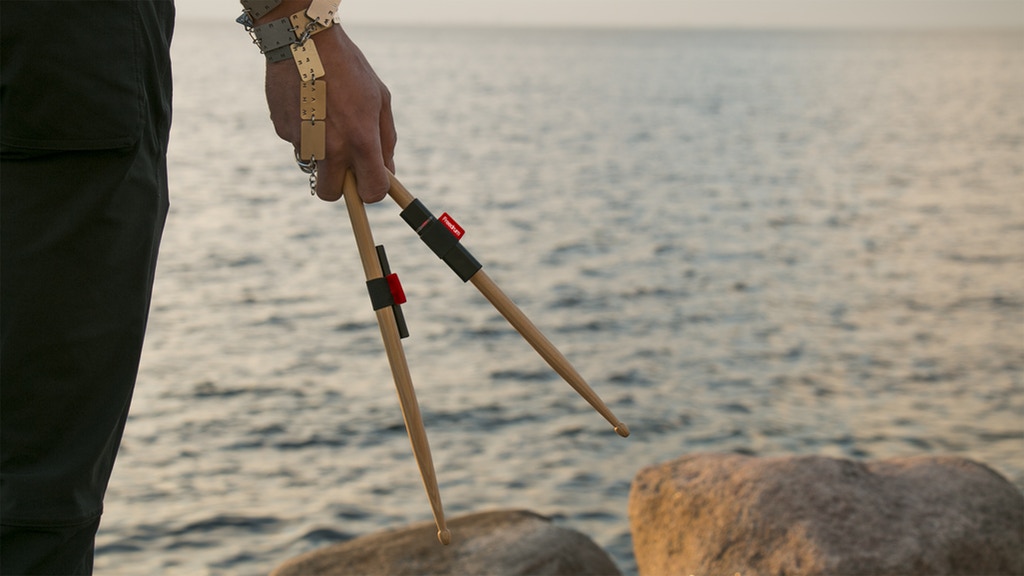
What:
Freedrum smart drumsticks at one time, as they say, "blew up the Internet." The funny thing is that these are not sticks at all, but simply sensors that are attached to ordinary sticks and legs of a musician. Small and lightweight boxes contain gyros, Bluetooth modules and batteries. When they connect to a mobile device or computer, the program monitors the movement of the sensors in the air and records their "hits" on the virtual drum set.
How does it sound:
In fact, Freedrum are such unorthodox MIDI controllers, so the sound also depends on the device to which they are connected. The outside observer will hear exactly what the musician will allow him to hear: with headphones, playing the chopsticks through the air turns into a silent pantomime.
Summary:
Freedrum raised over $ 600,000 on Kickstarter. Currently, their developers have begun to supply an unusual tool, while continuing to take orders through the site. The sensors were taken by the drummers with delight, but not without criticism: the specific problems are caused by the wireless connection and the lack of recoil and physical contact with the installation. It turned out that simply “drumming” through the air and playing the “air drums” are two different things. But the added complexity only hones the skill level of the player.
dadamachines
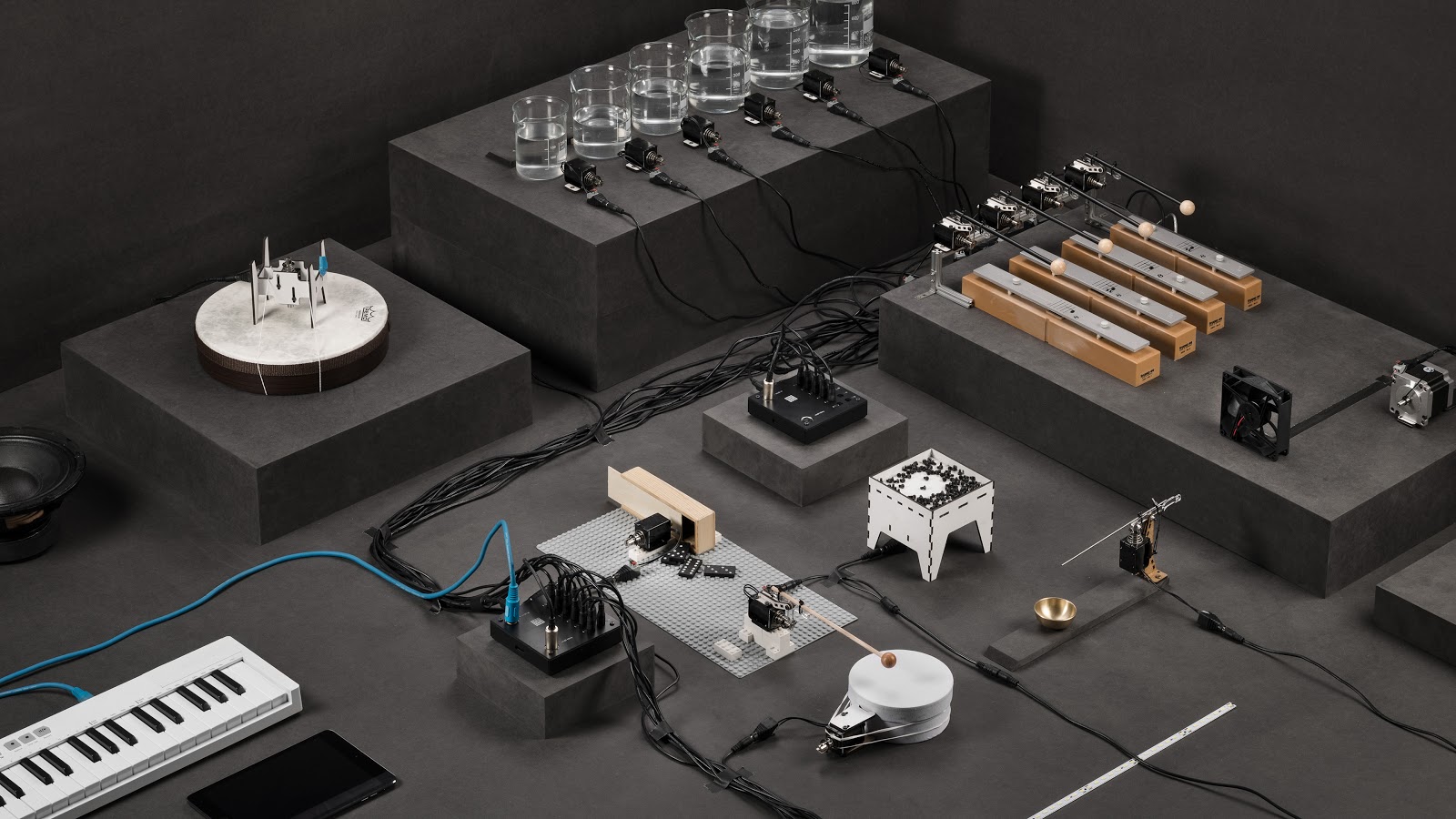
What:
If all previous examples fit into a non-expert's idea of a musical instrument, then the dadamachines set is definitely next door to Malevich’s Black Square and other incomprehensible abstractionism. The name itself was definitely chosen for good reason: dadamachines were invented in Berlin, where the Dadaist movement was strong in its time.
How does it sound:
The kit consists of a controller, wires and mechanical hammers that extract sounds from everyday things. Combining the system together, the musician gets a kind of percussion orchestra, which performs music on bottles, glasses, boxes of garbage, real drums and the wall of your beloved neighbor. To turn this noise into melody and rhythm, the musician will need a good ear and talent - or, on the contrary, the listener will need it.
Summary:
The creator of dadamachines, Johannes Lohbiler, really wanted to get away from the artificial computer sound and return to the acoustic sound. His experiment collected about € 170,000 on Kickstarter and Indiegogo, so several hundred people definitely expressed solidarity with this position. It is possible that such a "Dada" will develop in the future.
Dualo Du-touch
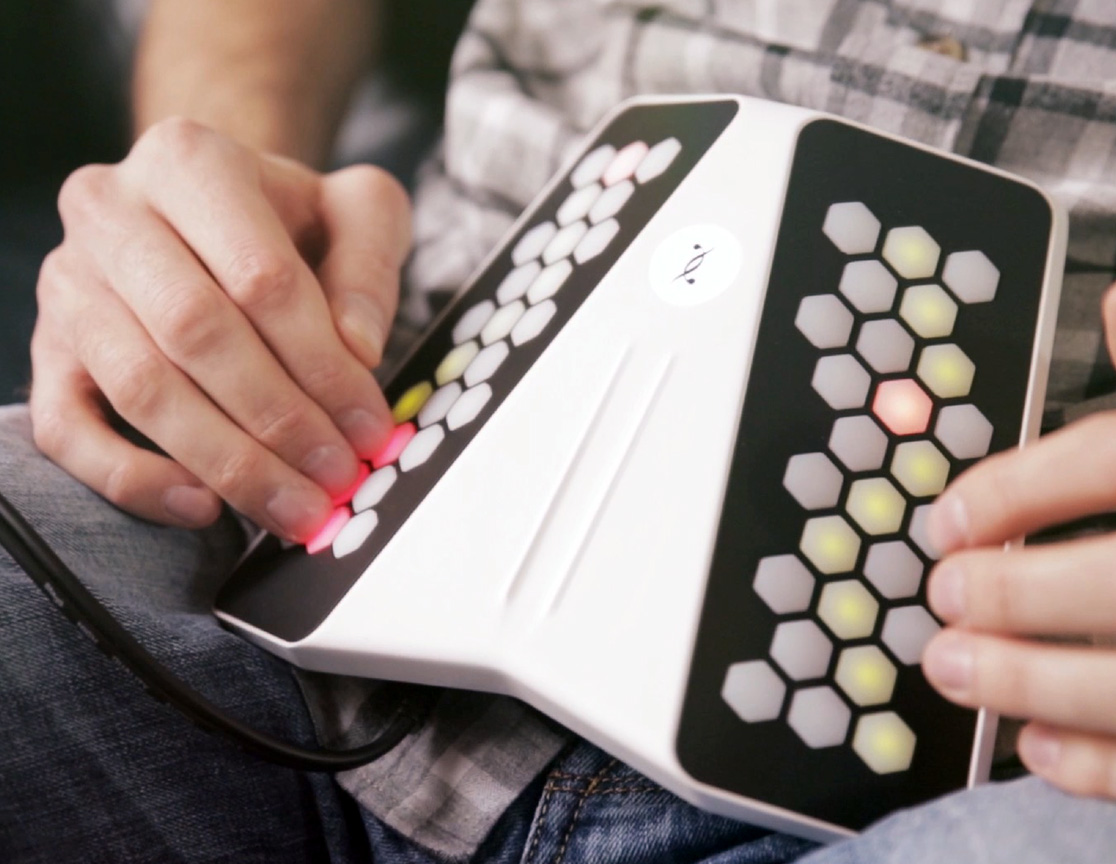
What:
The Dualo Du-touch small gadget resembles an accordion without bellows, but this is actually a combination of a MIDI controller, a sequencer, and a synthesizer. On such an instrument, it is easy to record and perform a complex composition, because it records and plays loops (repetitive musical passages) from dozens of different sounds. It is enough for a musician to play the passage once on a pair of touch panels, and then loop it, and repeat this operation until the satisfaction of the resulting melody.
How does it sound:
Du-touch has two options — large (L) and small (S). In addition to size, devices differ from each other in the number of buttons on the panels and the volume of the MIDI library (116 and 52 sounds, respectively). One thing remains unchanged: the absence of a speaker, the signal is fed to the line port and headphone output. The quality of the sound will ultimately depend greatly on what equipment is connected to the Du-Touch. It is worth noting that both tools are carried on a special belt on the abdomen.
Summary:
The first, big Du-touch, became a serious success for its developers in 2014. In mid-2016, they raised € 200,000 to Kickstarter for the launch of a small version that is currently in production. “MIDI accordion” was not the only controller of this kind on Kickstarter: in April 2017, the Hyve mini touch synthesizer successfully closed the campaign. But Du-touch includes three functions at once, so the popularity of such a handy thing is ensured.
Boppad
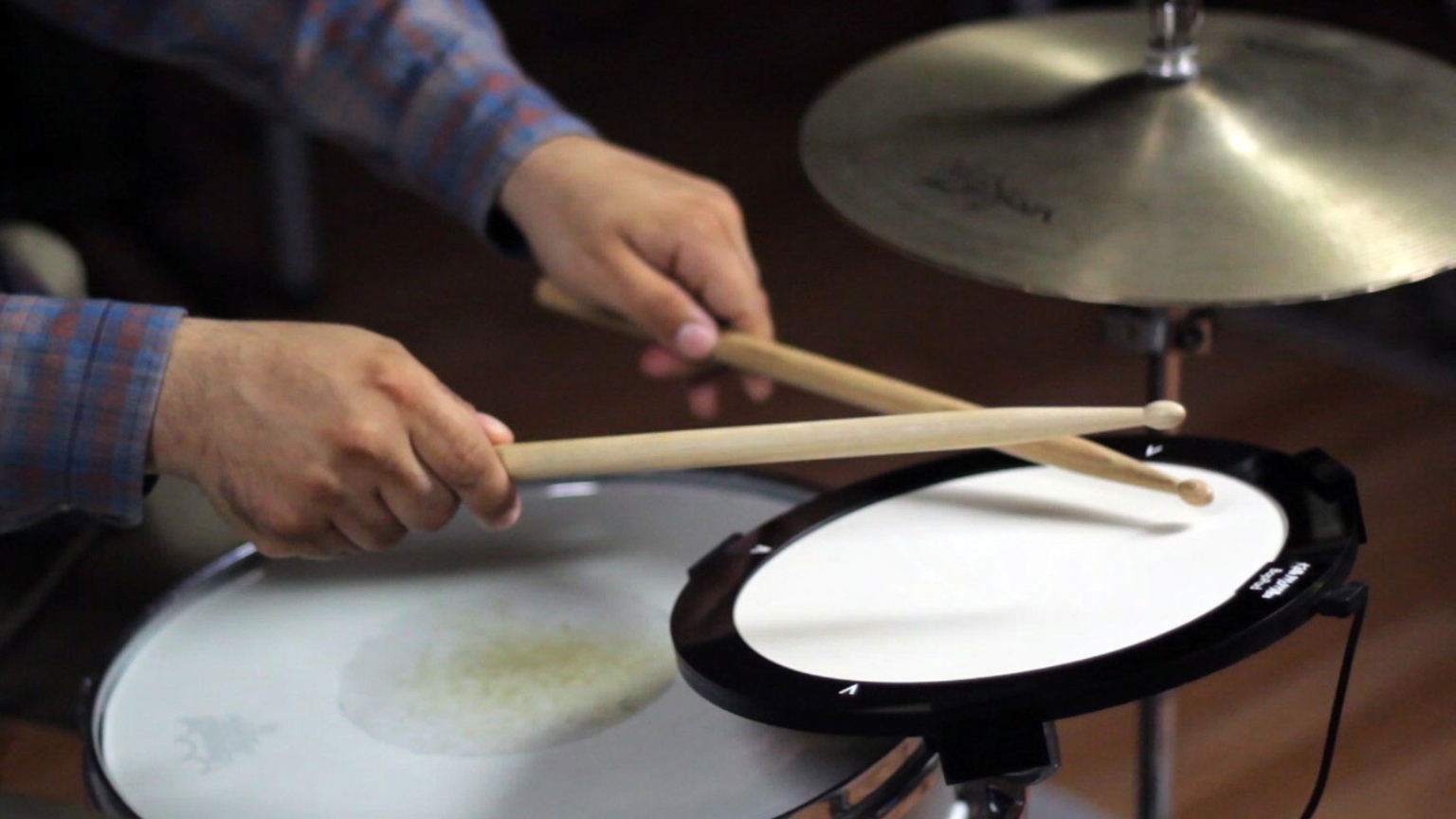
What:
Electronic drums produced by Roland, Korg and Yamaha are familiar to musicians. Master Keith Macmillen, known for Zeta electric violins and the QuNeo controller, didn’t have enough of these rich choices, so he launched BobPad electronic percussion on Kickstarter. Its main difference is the hypersensitive “smart cloth” instead of the silicone pads, which is nice to drum with your fingers, sticks or hammers.
How does it sound:
In order for the instrument to sound, the sound from it must be output to a separate speaker. BobPad has a very small surface with a diameter of 25.5 centimeters, divided into 4 segments, each with its own sound application. Such minimalism is fully justified by the fact that the “smart fabric” distinguishes force, duration, speed and direction of impact, so the musician has something to experiment with.
Summary:
The device campaign collected $ 110,000 for Kickstarter in 2016 and successfully delivered all orders in mid-2017. True, the press ignored the novelty - well, the drum and the drum. But the friendly support of backers with the silence of journalists clearly speaks in favor of the project. It is on such instruments, between traditional percussion and MIDI-controller, that drummers will have to knock.
Mogees
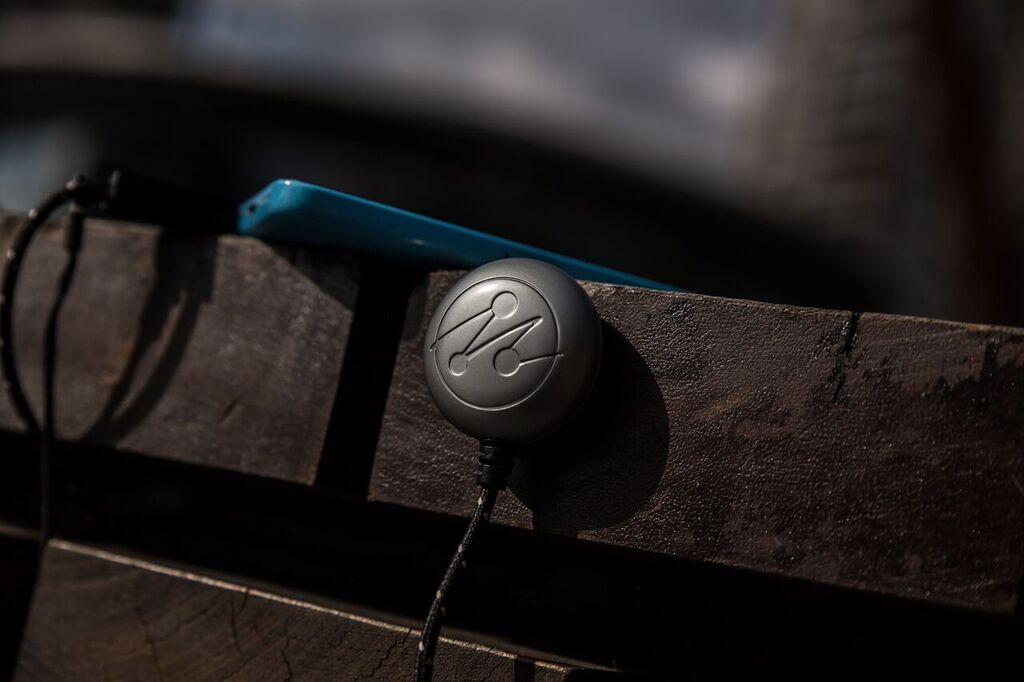
What:
Mogees Sensor is a distant relative of the dadamachines, which also extracts sound from the outside world. This is where the similarity ends, because a rounded gadget transforms vibrations into MIDI signals using a mobile application. However, he can also record sounds, because there is a microphone inside the gadget, but this is not its main purpose.
How does it sound:
Mogees is attached to any surface: table, tree, car, bowl of fruit. To start picking up this surface, you have to start driving with your fingers, knocking with your feet, and so on. The instrument is ideal for an experimental experimenter: after all, with it you can not just beat off the rhythm, but also play a melody in the process. Mogees are fond of small children, for whom the “adult” instruments are still large and complex, but such an entertaining thing gives a chance to play with the sound.
Summary:
In 2014, the Mogees sensor was successfully funded via Kickstarter. Now the gadget is sold on the manufacturer’s website and through Amazon, but over the years it has become somewhat morally obsolete. The iPhones lost the mini-jack through which the device was connected. However, the basic idea remains relevant: the tools change, but the easiest way to interact with it remains the same.
Of course, this compilation is just a small slice of the music industry of innovation and does not pretend to comprehensive coverage. What tools have we missed? What would you play in the future? Share your opinion in the comments.


Source: https://habr.com/ru/post/370915/
All Articles